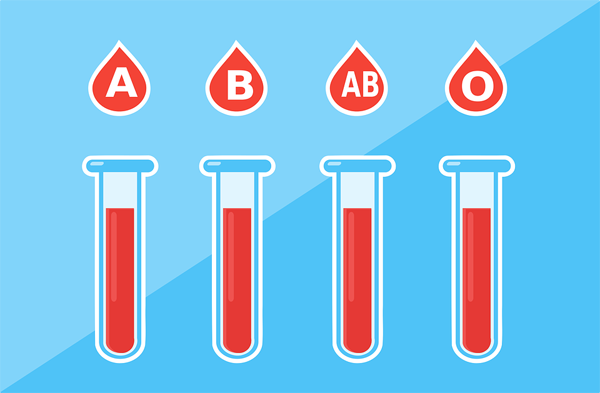By Steve Graff
February 19, 2018
The Connection Between Blood Type and Heart Health
It’s a question that has been vexing researchers for more than half a century but have yet to fully answer: Does having a certain blood type – AB or O, for example – increase your risk for heart disease?
Some patients may not even know this is being asked. After all, it’s believed many Americans don’t know their blood type, so any health risks associated with it wouldn’t likely be on their minds. But a quick Google search reveals loads of studies, including ones led by Penn Medicine researchers, investigating a possible connection – and those are just the ones over the last year.
Indeed, scientists have been trying to better understand the relationship between disease and blood type since the early 1900s, when they first discovered that antibodies and antigens on blood cells and plasma are inherited. Heart disease risk became more into focus in the late 1960s, and clearer in the 1970s when results from the Framingham Heart Study, a large, ongoing study designed in the 1940s to answer much-needed questions about the cause and prevention of heart disease, were published. In the following years, researchers continued to study both small and large groups of patients for extended periods to see who may develop such diseases.
Here’s one finding that has continued to surface over the years: People with a non-O blood type (that’s A, B, or AB) are at a higher risk of developing cardiovascular diseases. Exactly why this is remains unknown, but many speculate that it may have to do with something called the von Willebrand factor, a protein associated with clotting that’s found in greater concentrations in the non-O blood types, or potentially higher cholesterol levels associated with blood types.
Blood is divided into four groups – A, B, AB, and O – which are determined based on the presence or absence of antigens in red blood cells. In addition to the A and B antigens, there is a third antigen known as the Rh factor used to name types. So, for example, if someone is blood type A but lacks the Rh factor, they are A negative. Worth noting is that about half the population is type O, meaning the other half have either A, B, or AB.
Now, how big a risk blood types pose and the significance of that risk has been more debated among researchers.
That first study in the mid-1970s from the Framingham cohort described a “slight excess risk of [cardiovascular disease] for non-O men, although this conclusion is tentative due to lack of statistical significance.” By the 1980s and 1990s, more studies had surfaced and solidified the risk in the non-O group, but findings were still uneven. Blood type A positive was associated with an increased risk over the others in many reports, and the risks for the non-O group were being reported as slight to significant, depending on the group of people being studied (gender, ethnicity, etc.) and how big a cohort.
Fast forward to times closer to now, and the risk remains, as well as some inconsistency in the findings.
A 2012 study in the journal Arteriosclerosis, Thrombosis and Vascular Biology that included more than 20 years of data from 62,000 women and 27,000 men found that blood type AB was associated with a 23 percent higher risk of cardiovascular disease, while type B was associated with an 11 percent higher risk, compared to O type. The overall risk was 6.27 percent.
Last May, at the 2017 Heart Failure meeting in Paris, researchers presented data on more than a million patients and found that people with type A, B, or AB blood were nine percent more likely to have a cardiovascular event than those with type O blood.











